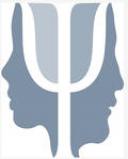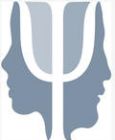Education
Individual Students, Literacy Research, and Policy
There are multiple sources of influence on teaching and learning.
Posted February 4, 2015
By Dr. Carol McDonald Connor
Literacy is a crucial skill and a human right in today’s society. The early grades, especially kindergarten through third grade, are when most children learn to read. However, this varies greatly based on a number of interacting and closely related sources of influence—from genetics, to the classroom, to policy. For example, reading is a highly heritable skill and twin studies suggest that by 2nd grade, about 70% of the variability in students’ reading skills is related to genetics (Byrne et al., 2009). Yet, in first and second grade, the impact of effective teaching is not trivial (Taylor, Roehrig, Connor, & Schatschneider, 2010). Children’s cognitive, social, and emotional development influences their sequence of literacy learning and when (or if) they become proficient. Home environment and the social, cultural, and capital resources available to parents are highly influential prior to students starting school, and these influences continue through high school and beyond. Parenting can be both a risk and a protective factor.
Only slightly less influential is the classroom learning environment and the specific and general instruction students receive. Specificity of learning—that children learn what they are taught—is well documented. Transfer effects are an appealing but fleeting and rare phenomenon. There are also child characteristics-by-instruction interactions (or aptitude-by-treatment interactions), which show that the impact of specific instructional strategies (e.g., explicit instruction vs. discovery learning) depends on students’ unique profiles of literacy, language, and world knowledge.
Learning to read is also affected by more distal influences, including local, state, and national policies about education. For example, a number of states are implementing policies that are intended to make sure students are reading proficiently by the end of third grade. Indeed, 14 states have adopted third grade retention policies for students who are still struggling with reading (Education Week blog, January 2, 2015).
So what does this mean for educational psychologists, theory, research, and efforts to bring research into practice? Psychologists have identified many of these sources of influence on children’s literacy development (and their development in general). However, we have been less successful bringing this deep understanding of individual child differences into the classroom and helping policymakers and practitioners understand why considering individual differences, and the reasons for these differences, is crucial for improving literacy instruction and student learning. How can we be more successful in this endeavor?
First, when we conceptualize education as a complex system, we can be more successful in illuminating the most important sources of influence, how they impact literacy learning, and how we can design effective individualized (or personalized or differentiated) literacy instruction. In her pre-presidential address, Karen Harris stated that “continuing to understand and integrate what we know across theories, methods, and paradigms will allow us to advance the field by assisting policymakers and practitioners to define, acquire, interpret, and ultimately use research.” As a field, we might take a closer look at dynamic systems and complex adaptive systems theories (e.g., Bronfenbrenner & Morris, 2006; Mitchell, 2011). The disciplines of economics, archeology, and biology are finding that conceptualizing their constructs as part of complex adaptive and dynamic systems provides a framework that forces the study of multifaceted synergistic and often reciprocal relationships. Thinking about teaching and learning as part of a complex system—where the individual student both affects and is affected by instruction—helps us avoid over-simplification and provides a model that more closely resembles what is actually happening in classrooms, schools, districts and states. This is not the time for small theories.
Second, “assessment” has become a dirty word. And yet, without a clear understanding of students’ developing strengths and weaknesses on key skills (and what might be the important sources of influence on their development), we will not be able to support teachers and educational leaders in their efforts to improve instruction. For example, two first grade students might be experiencing difficulty learning to read. One has a learning disability and the other has had limited experience with the kinds of activities that support early literacy (e.g., reading with parents, building world knowledge, etc.), perhaps because the parents lack the resources to provide these experiences. The amounts and types of literacy instruction that these first graders will require are going to be different. With new technologies and psychometric strategies available, we can help educators assess a constellation of key skills, underlying aptitudes, and contexts that together provide a richer and more dynamic understanding of how to design and implement instruction for individual students.
Finally, it might time for educational psychologists to ask themselves what it is that pre-service and in-service teachers, educational leaders, and policymakers really need to know. What do we include in our coursework and research that will truly help future educators become better teachers? How much theory do pre-service teachers really need? What do teachers and educational leaders need to know about assessment, rigorous research, and evidence-based practice? What are the most important research questions and how do we answer them? How do we explain to policymakers that it is worth considering the rigorous research already available when developing policy and carefully evaluating the complex effects of already implemented policy. When we promote research, policy, and practice that support effective learning for each and every child in the classroom, I suggest that we succeed as a discipline that is truly dedicated to improving education.
This post is part of a special series contributed in response to Karen R. Harris’ Division 15 Presidential theme, “Impacting Education Pre-K to Gray.” President Harris has emphasized the importance of impacting education by maintaining and enriching the ways in which Educational Psychology research enhances and impacts education at all ages. Such impact depends upon treating competing viewpoints with thoughtfulness and respect, thus allowing collaborative, cross/interdisciplinary work that leverages what we know from different viewpoints. She has also argued that we need to set aside paradigm biases and reject false dichotomies as we review research for publication or funding, develop the next generation of researchers, support early career researchers, and work with each other and the larger field.
References
Bronfenbrenner, U., & Morris, P. A. (2006). The bioecological model of human development. In R. M. Lerner & W. Damon (Eds.), Handbook of child psychology: Theoretical models of human development (6th ed., Vol. 1, pp. 793-828). Hoboken, NJ: John Wiley & Sons.
Byrne, B., Coventry, W. L., Olson, R. K., Samuelsson, S., Corley, R., Willcutt, E. G., . . . DeFries, J. C. (2009). Genetic and environmental influences on aspects of literacy and language in early childhood: Continuity and change from preschool to grade 2. Journal of Neurolinguistics, 22(3), 219-236. doi: 10.1016/j.jneuroling.2008.09.003
Mitchell, M. (2011). Complexity: A guided tour (Vol. Kindle Edition). New York: Oxford Press.
Taylor, J. E., Roehrig, A. D., Connor, C. M., & Schatschneider, C. (2010). Teacher quality moderates the genetic effects on early reading. Science, 328, 512-514.




